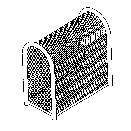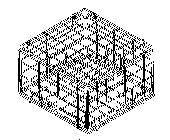Trade Dress and the TTAB
Since the Supreme Court’s decisions in Wal-Mart (2000) and TrafFix (2001), the TTAB has not been kind to product configuration trade dress. The Board’s approach to registrability is summed up in the title of my recent article, "Trade Dress and the TTAB: If Functionality Don’t Get You, Nondistinctiveness Will," 18 Allen’s Trademark Digest 5 (November 2004).
The TTAB’s two most recent (and uncitable) product configuration decisions, oddly both involving wire cage devices, demonstrate the difficulty faced by an applicant seeking to overturn a refusal to register a product shape. In each case, the Applicant’s own boastful advertising (coupled with pertinent utility patents in one case) proved fatal on the issue of functionality. Furthermore, in each case the Board, for the sake of completeness, went on to consider the secondary meaning issue, and (as a sort of bonus refusal) ruled that the Applicant had failed to meet the higher Section 2(f) burden applicable in product configuration cases.
In the first case, In re Backflow Prevention Device Inspections, Inc., Serial. Nos. 76016339-41 (Aug. 31, 2004), the Board affirmed Section 2(e)(5) refusals to register three product configurations as trademarks for “enclosures for protection of backflow assemblies, namely, a metal cage placed over backflow assemblies,” finding the marks to be de jure functional. Each mark consisted of “a configuration of an enclosure with no sharp corners . . . .”

Applying the CAFC’s Morton-Norwich factors, the Board noted that Backflow’s own advertisements stated that pedestrian safety is an important function of the enclosures (which cover above ground water pipes and the like) and that the “no sharp corners” feature of the designs is critical to this function. As to Backflow’s acquired distinctiveness claim, the Board found its proofs inadequate: unimpressive sales and advertising figures and several uniform and conclusory statements from purchasers and industry personnel, but nothing to indicate the designs themselves were promoted as trademarks.
In the second, In re The Danielson Co., S.N. 76406586 (Oct. 27, 2004), the Board affirmed a Section 2(e)(5) refusal to register the configuration of a crab trap “having a generally square foot print and a height generally between 40% and 60% of its length or width.”

This Board panel applied the Valu Engineering factors (a/k/a the Morton-Norwich factors), and found that utility patents and advertising materials disclosed the utilitarian advantages of the applied-for design – namely that half-square traps “set more easily” and are “less likely to tip over.” As to acquired distinctiveness, despite Danielson’s use of the “mark” since 1975 and its sales of $500,000, there was no indication that it had promoted the design as a trademark or that consumers recognize the design as a source indicator.
As discussed in my article, if the utilitarian advantages of the product design are disclosed or claimed in a utility patent, or if the advantages have been touted in advertising, there is little or no change that an Applicant can convince the Board to overturn a Section 2(e)(5) refusal. Even if the de jure functionality hurdle is cleared, the applicant must then face the heavier Section 2(f) burden that applies to product shapes. Unless the applicant has made a significant effort to promote the product shape as a trademark, there is little hope that the Board will find the evidence sufficient to prove secondary meaning.




0 Comments:
Post a Comment
<< Home